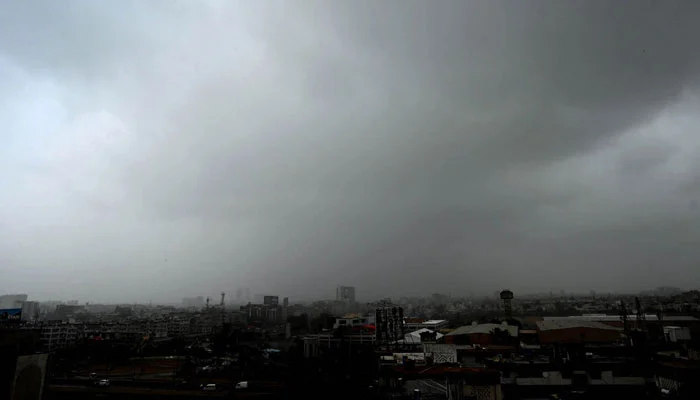Karachi experienced another rainy morning on Saturday as thick clouds hovered above the city and drizzle was reported from multiple neighborhoods. The Pakistan Meteorological Department (PMD) confirmed that light showers are expected to continue intermittently through Sunday, June 29, driven by a westerly wave system currently active over Sindh.
Weather reports indicate that the city’s seabreeze has halted, with light northeast winds blowing at around 9 km/h. The shift in wind patterns is contributing to increased humidity, despite the cooler temperatures.
The PMD has issued a warning for urban flooding, especially in Karachi and other low-lying cities across Sindh, such as Hyderabad, Thatta, Badin, Larkana, Sukkur, and Mirpur Khas. Emergency response teams have been placed on alert to respond to potential disruptions caused by clogged drains and water accumulation.
Heavy Rainfall Expected Across Sindh and Beyond
According to the PMD, the current system will bring widespread rains, thunderstorms, and gusty winds to:
- Karachi, Hyderabad, Ghotki, Jacobabad, Dadu, Sanghar
- Khairpur, Sujawal, Tharparkar, Shaheed Benazirabad, and Naushehro Feroz
While some areas will receive light to moderate rainfall, others may experience heavy downpours, increasing the risk of localized flooding.
Elsewhere in Pakistan, monsoon activity is intensifying. Rain has been forecast across Punjab, Balochistan, Khyber Pakhtunkhwa, and Azad Kashmir, continuing the country’s broader wet season.
Recent data shows Mithi received 53mm of rain, with Tharparkar logging 45mm, the highest totals in the past 24 hours. These figures reflect the growing intensity of the ongoing monsoon cycle.
Looking ahead, the next active monsoon system is expected to arrive from July 5 onward, potentially bringing another wave of widespread rainfall across the region. Travelers and residents are encouraged to monitor weather bulletins and exercise caution in flood-prone zones.
